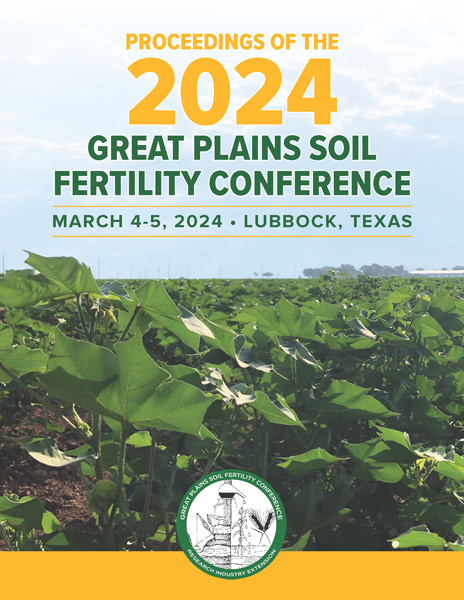Conference Proceedings Available!
Proceedings
Authors
| Filter results4 paper(s) found. |
|---|
1. Strategic Tillage Effects on Crop Yield and Soil Properties and Dryland Crop RotationsThis study evaluated strategic tillage (ST) to control HR weeds and improve crop yields in an otherwise long-term no-till (NT) soil. Treatments were five crop rotations: 1) continuous winter wheat (Triticum aestivum L.) (WW); 2) wheat-fallow (WF); 3) wheat-sorghum (Sorghum bicolor L.)-fallow (WSF); 4) continuous sorghum (SS); and 5) sorghum-fallow (SF) as main plots. The sub-plot were reduced tillage (RT), continuous NT, and ST of NT. Results showed tillage (ST or RT)... A. Obour, J. Holman, L. Simon, A. Schlegel |
2. In-furrow Placement of Dry Urea Prodcuts with Winter WheatPrevious research has shown that the application of some nitrogen fertilizer prior to or at the time of wheat seeding can positively affect the initiation of fall tillers and thus yield potential. However, there are logistical challenges in placing that nitrogen in no-till production systems. Traditionally, the placement of urea-based fertilizers in-furrow with wheat seed has not been recommended. The objectives of this project were to evaluate stand reduction and associated... L. Haag, A. Schlegel, D. Ruiz diaz |
3. Long-term Forage Rotation Yields, Soil Water Use, and ProfitabilityForages are important for the region’s livestock industry and are becoming increasingly important as irrigation capacity and grain prices decrease. Forages require less water than grain crops and may allow for increasing cropping system intensification and opportunistic cropping. A study was initiated in 2012 at the Southwest Research-Extension Center near Garden City, KS, comparing several 1-, 3-, and 4-year forage rotations with no-tillage and minimum-tillage. Data presented are from 2013... J. Holman, A. Obour, A. Schlegel, L. Simon |
4. Can Soil Health Metrics Improve Standard Soil Fertility Recommendations?It is commonly speculated that integrating soil health (SH) testing with soil fertility (SF) testing would improve fertilizer recommendation decisions. However, quantified impacts of SH properties, specifically soil biological properties, on fertilizer demand have not been well established. The objective of this research was to explore corn (Zea mays L.) yield response to phosphorus (P) and potassium (K) fertilization as influenced by established SF analysis and common SH metrics.... N.R. Kitchen, J.D. Svedin, S.H. Anderson, K.S. Veum, C.R. Ransom |
